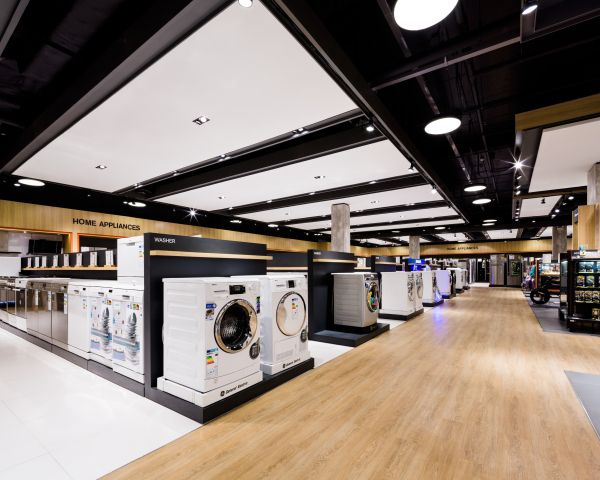Given a broad usage, the domestic application attached to home appliance is tied to the definition of appliance as "an instrument or device designed for a particular use or "devices or machines, usually electrical, that are in your home and which you use to do for nearly any device intended for domestic use to be a home appliance, including consumer electronics as well as stoves,

Consumer electronics or home electronics are electronic (analog or digital) equipment intended for everyday use, typically in private homes. Consumer electronics include devices used for entertainment, communications and recreation. In British English, they are often called brown goods by producers and sellers, to distinguish them from "white goods" which are meant for housekeeping tasks,
 International Payments
International Payments
 Barcode wise billing
Barcode wise billing
 Gst filing
Gst filing
 Customer relation management
Customer relation management
 User friendly mobile apps
User friendly mobile apps
 attractive
attractive


There is a trend of networking home appliances together, and combining their controls and key functions.[17] For instance, energy distribution could be managed more evenly so that when a washing machine is on, an oven can go into a delayed start mode, or vice versa. Or, a washing machine and clothes dryer could share information about load characteristics (gentle/normal, light/full), and synchronize their finish times so the wet laundry does not have to wait before being put in the dryer.
 Deposit Checks Instantly
Deposit Checks Instantly
 A powerful open API
A powerful open API
 Affiliates and partnerships
Affiliates and partnerships
 Coverage around the world
Coverage around the world
 Business without borders
Business without borders
 Web Design Interface
Web Design Interface
Some of these being connected to the Internet. Some such appliances were traditionally finished with genuine or imitation wood, hence the name. This has become rare but the name has stuck, even for goods that are unlikely ever to have had a wooden case (e.g. camcorders). In the 2010s, this distinction is absent in large big box consumer electronics stores, which sell both entertainment, communication, and home office devices and kitchen appliances such as refrigerators. The highest selling consumer electronics products are Compact discs.
 International Payments
International Payments
 Request Features
Request Features
 Premium Support
Premium Support
 Direct Debit
Direct Debit
 Automated accounting
Automated accounting
 User Interface
User Interface

A payment is the voluntary tender of money or its equivalent or of things of value by one party (such as a person or company) to another in exchange for goods, or services provided by them, or to fulfill a legal obligation. The party making the payment is commonly called the payer, while the payee is the party receiving the payment.All publicly accessible websites collectively constitute the World Wide Web. There are also private websites that can only be accessed on a private network, such as a company's internal website for its employees.

*We’re willingly is here to answer your question about aila